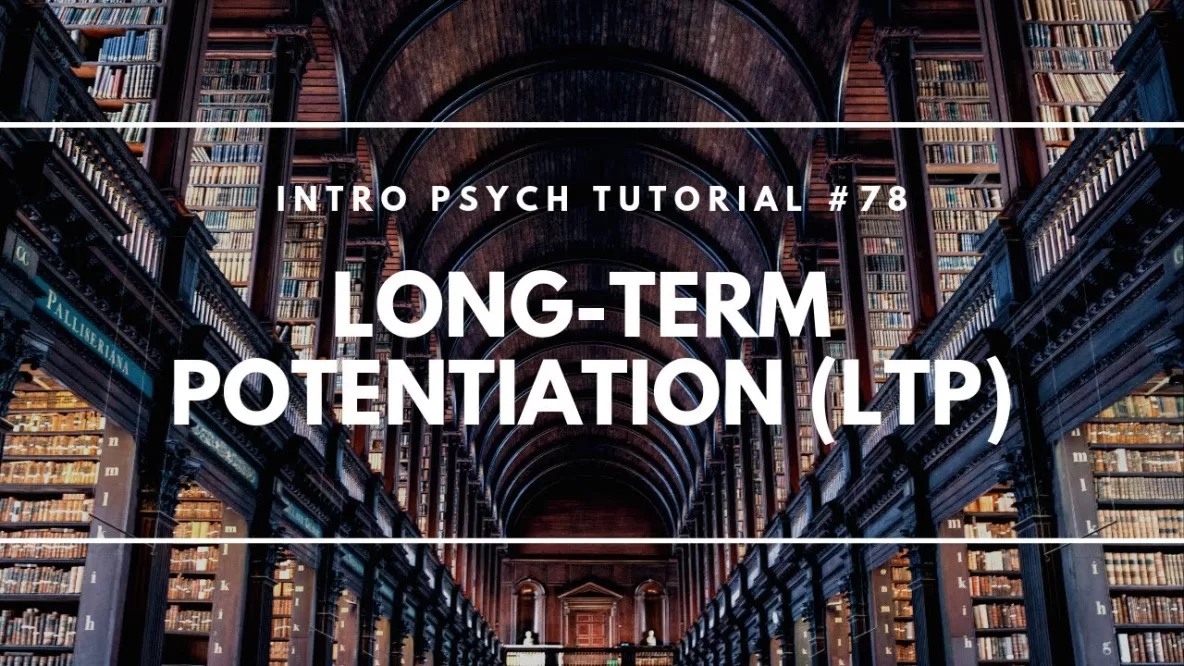In this video I explain the concept of long-term potentiation, which refers to the strengthening of neural connections due to repeated synchronous firing. Repeated firing leads to changes in chemical signaling between the two neurons, influencing neurotransmitter and receptor activity. Next I introduce an example of this with the possible role of the N-methyl-D-aspartate receptor (for the neurotransmitter glutamate) in memory and learning. This has been demonstrated in mice given NMDA antagonists which then impaired their performance on the Morris water maze.
Don’t forget to subscribe to the channel to see future videos! Have questions or topics you’d like to see covered in a future video? Let me know by commenting or sending me an email!
Check out my psychology guide: Master Introductory Psychology, a low-priced alternative to a traditional textbook: http://amzn.to/2eTqm5s
Morris Water Maze Demonstration:
https://www.youtube.com/watch?v=LrCzSIbvSN4
Video Transcript:
Hi, I’m Michael Corayer and this is Psych Exam Review. In this video we’re going to go into a little more detail on the biology of memory and this time we’re going to look at the level of neurons.
We’re going to look at something known as long-term potentiation or LTP. Now long-term potentiation is often summarized with the expression “neurons that fire together, wire together”. Now of course, the neurons don’t actually wire together, they maintain their separation at the synapse, right, this gap between the neurons, but what this means is that neurons change their connection to one another and they strengthen it through chemical signaling.
So this refers to strengthened connection between neurons and since, again, they’re not physically connected, this connection occurs in the form of chemical signaling. How does this work? Well, imagine we have two neurons that are firing together repeatedly. So the first neuron fires, this causes the second neuron to fire, and by repeating this process over and over again, the interaction at the synapse changes.
So the first neuron can change the level of neurotransmitter that it’s releasing and the second neuron can actually change its receptors to make it more sensitive to that neurotransmitter. So what happens is this makes it more likely that when the first neuron fires, the second neuron will also fire. This is how we have this strengthened connection.
How does this process actually occur? Well, it’s not fully understood but one thing that plays a role is a receptor. This is a receptor for something called n-methyl-d-aspartate. Alright so, this is a receptor and it’s a receptor for the neurotransmitter glutamate.
Ok, so how do we know that this n-methyl-d-aspartate or NMDA plays a role in long-term potentiation and memory formation? Well, some of this research comes from a researcher named Richard Morris and what Morris did was he created this water maze task where you take a mouse and put it in a tank of water, and the mouse couldn’t see through the water, it was kind of murky, and there will be a hidden platform somewhere in the tank. So the mouse would have to swim around searching for this platform to stand on so that it could rest.
The idea was that over time the mouse would get better at finding this platform, right? It’s essentially like performing the maze and the mouse would learn where that platform is and swim directly to it when placed into the tank. Now this allowed for comparison between mice. Some of these mice were given a drug that blocks the activity of this NMDA receptor and as a result of this, their ability to learn where the platform was was impaired.
It shows that this NMDA may play a role in the formation of memory and learning. Ok, so that’s the basic idea of long-term potentiation and the role of NMDA in this process.
I hope you found this helpful, if so, please like the video and subscribe to the channel for more.
Thanks for watching!

